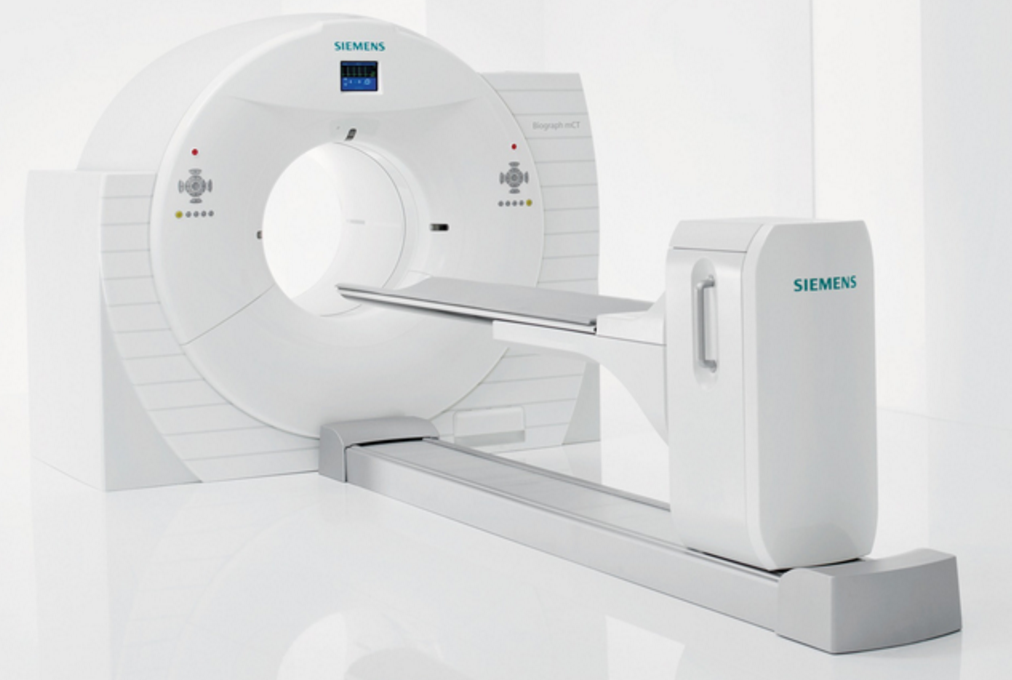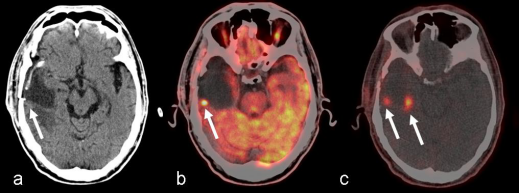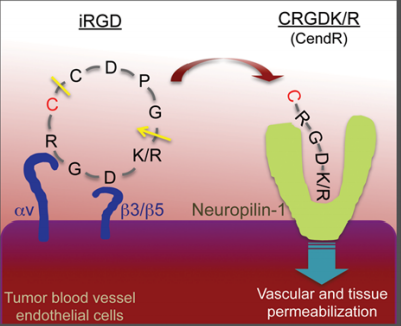1.Overview
PET/CT center was founded in Feb, 2015 which started to treat patients on May, 2016. The center has a total of 10 employees consists of radiologists, radiochemists, technologists and nurses. All radiologists and radiochemists have a Master degree, and have published more than 15 SCI papers to their credits. All employees were sent to top hospital for further study more than three months. PET/CT center is equipped with world-class advanced hardware which include Siemens Biograph mCTs (64) PET/CT scanner and Sumitomo HM-10HC cyclotron.
Since its inception, PET/CT center has performed more than 2,000 PET/CT scans and simulated location for radiotherapy with high quality. The center diagnosis cancer and evaluate treatments by using a variety of PET tracers (18F-FLT, 18F-FMISO, 18F-FECHO, 11C-CHO, 11C-ACE, 11C-MET) beside 18F-FDG, which could help physicians getting information of DNA replication, cell membrane synthesis, hypoxia and amino acid metabolism of cancer cells. PET/CT center leads the nation in PET tracers for clinical use, and provides the-state-of-art PET/CT scan for patients.
Prof. Cheng Zhuzhong M.D. Ph.D. is now director of the center, and serves as Executive member of The professional society of nuclear medicine, Chinese Anti-Cancer Association.
2.Equipments and facilities
PET/CT center is equipped with Siemens Biograph mCTs PET/CT scanner (64 slices CT and 52 slices PET), Sumitomo HM-10HC cyclotron (10 MeV), Sumitomo FDG synthesizer, Sumitomo multi-purpose synthesizer, Shimadzu high performance liquid chromatography and Bio-scan thin layer chromatography which can meet different needs for patients.

Figure 1. Siemens biograph mCT PET/CT scanner
3.Clinical advantages
1) Differential diagnosis by using FDG-PET and enhanced CT
Enhanced CT could collect blood supply information of suspicious lesions indicated by FDG-PET which do not show any anatomical changes in plain CT scan. This combination of FDG-PET and enhanced CT could help radiologists to make a definite diagnosis.

Figure 2. FDG-PET combine with enhanced CT scan in patient with advanced pulmonary carcinoma with liver metastasis
2)Differential diagnosis by various PET tracers which include fluoride, fluorodeoxyglucose, fluoro thymidine, fluoromisonidazole, fluoroethyltyrosine, fluoroethylcholine, methione, choline and acetate.
FDG-PET can only reflects glucose metabolism tumor cells, and glucose metabolism capability could be various between different cancers. Besides, false negatives caused by inflammations could interfere diagnosis. The center use various tracers to describe pathophysiological status of tumor from different perspectives which involve DNA replication, hypoxia, glucose metabolism, choline metabolism, amino acid transportation and rate of Krebs cycle.

Figure 3. FDG-PET (b) combine with FLT-PET (c) scan in patient with glioma
3) Simulated location for radiotherapy
The center use PET/CT to improve the accuracy of biological intensity modulation radiation therapy by precise delineation of the target volume.
4. Research
1) After improving on synthesis processes, PET/CT center has succeeded in synthesizing various special imaging agents which include 18F-FLT (to reflect DNA replication), 18F-FMISO (to reflect hypoxia status), 11C-CHO (to reflect the biosynthesis of cell membrane), 11C-ACE (to reflect rate of Krebs cycle), 11C-MET (to reflect the transportation rate of amino acids), 18F-NaF (to reflect bone metastatic cancer). These special imaging agents show high quality and offer technical support for accurate delineation of biological target volume, intensity-modulated radiotherapy and clinical research.
2) PET/CT center have carried out researches between these special imaging agents above with tumor research focus such as tumor multidrug resistance (MDR), tumor Epithelial-Mesenchymal Transition (EMT), tumor immunosuppression, tumor autophagy. For example, 18F-FMISO has a close relationship with tumor Epithelial-Mesenchymal Transition.
3) In clinical study, PET/CT center have made some study on the correlations between clinical tumor indicators (such as the expressions of Ki67, ER, PR, HER2 in breast cancers) with 18F-FDG PET indicators including SUV (standardized uptake value), MTV (metabolism tissue volume) and TLG (total lesion glycolysis). PET/CT center also investigated the metabolism characteristics of various PET imaging agents in kinds of cancer patients and discussed the capacities of these PET imaging agents in tumor diagnosis, tumor staging and tumor prognosis.
4) PET/CT center is devoted to the study of PET molecular probes. Based on molecular targets such as EGFR T790M mutation, αvβ3/NRP-1, p32/gC1q and VEGF, a series radiolabelled ligands were synthesized, and the subsequent radiopharmaceutical studies, pharmacological studies, preclinical studies were also performed in the center.

Figure 4. Targeting principle of iRGD peptide

